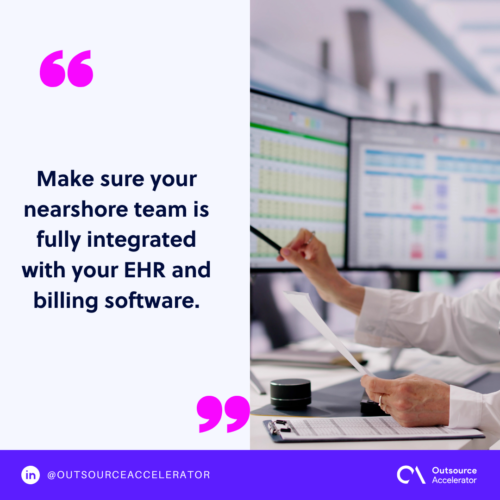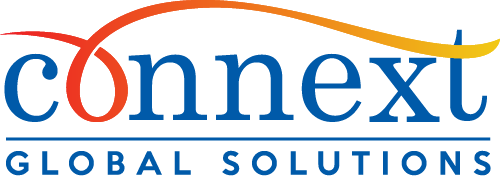6 Medical billing best practices for high-performing nearshore staff

Managing in-house medical billing presents significant challenges for healthcare clinics.
A wide-scale hospital report found that approximately 80% of medical bills in the U.S. contain errors, leading to costly denials and delayed reimbursements . These billing mistakes can result in financial losses of up to $125 billion annually for U.S. doctors.
Additionally, 68% of healthcare providers report that medical billing is their primary source of stress.
To address these issues, many clinics are turning to nearshoring medical billing specialists from Colombia. The country has a skilled workforce proficient in medical billing and coding, with a strong understanding of U.S. healthcare regulations and standards.
In this article, we’ll explore six medical billing best practices that clinics should consider integrating into their offshore staff to optimize efficiency and reduce errors.
Why are medical practices nearshoring medical billing?
Medical practices across the U.S. are shifting from in-house billing to nearshoring models, particularly in countries like Colombia. This change addresses long-standing inefficiencies in revenue cycle management.
Below we have the primary reasons behind this growing trend:
Cost savings
Nearshoring significantly reduces overhead. Practices cut expenses related to salaries, benefits, software, and office space.
Labor costs in Colombia are up to 60% lower than in the U.S., without sacrificing quality. These savings help clinics reinvest in patient care and operations.

Access to skilled talent
Colombia offers a strong pool of trained billing professionals who specialize in U.S. medical coding systems like ICD-10, CPT, and HCPCS. Many are bilingual, tech-savvy, and familiar with HIPAA compliance, which makes onboarding faster and smoother.
Faster turnaround times
Nearshored teams often work in similar time zones, allowing real-time communication and quicker task execution. With fewer delays in claim submission and follow-ups, clinics experience improved cash flow and fewer rejected claims.
Scalability
As patient volumes rise or billing needs grow, practices can scale their offshore teams quickly. Nearshoring eliminates long hiring cycles and training lags.
This flexibility supports clinics during seasonal spikes or periods of expansion.
Operational focus
Nearshoring billing tasks frees up in-house staff to focus on their core responsibilities, such as patient care, scheduling, and compliance. Reducing administrative burdens helps clinics improve service quality and internal morale.
Overall, nearshoring provides both strategic and financial advantages for today’s healthcare organizations.
6 medical billing best practices for offshore teams
Nearshoring specialists to Colombia can streamline operations, but success depends on implementing effective processes.
Here are six medical billing best practices that help nearshore teams deliver consistent, accurate results:
1. Standardize workflow processes
Create clear, step-by-step procedures for claim submission, denial management, and payment posting. Standardized workflows reduce errors and confusion, helping offshore teams stay aligned with your clinic’s expectations.
Use visual process maps and checklists to reinforce consistency.
2. Invest in compliance training
HIPAA compliance and familiarity with U.S. healthcare regulations are critical. Provide regular training sessions on data privacy, fraud prevention, and insurance guidelines.
A well-informed team lowers your risk of audits and legal complications, safeguarding your practice and patient trust.
3. Use real-time communication tools
Set up reliable channels for daily communication. Platforms like Slack, Microsoft Teams, or Zoom support real-time collaboration and reduce delays.
Assign dedicated points of contact to maintain accountability and improve response times. This fosters a sense of teamwork and immediate problem-solving.
4. Track key performance metrics
Monitor metrics such as claim acceptance rates, average reimbursement time, and denial rates. Utilize dashboards to monitor performance and pinpoint areas that require attention.
Regular reporting helps your nearshore team meet benchmarks and improve billing accuracy. Data-driven insights empower you to make informed decisions and optimize workflows.
5. Conduct routine quality audits
Schedule periodic reviews of submitted claims, coding accuracy, and patient data entry. These audits uncover mistakes before they affect revenue.
Feedback loops based on audit findings can guide future training and process improvements. Consistent auditing ensures adherence to best practices and minimizes financial errors.
6. Align with your practice management system
Make sure your nearshore team is fully integrated with your EHR and billing software. Provide hands-on training with your systems and grant appropriate access.
Familiarity with your tools increases efficiency and reduces technical roadblocks. Seamless system integration promotes smoother workflows and data accuracy.

Tap into seasoned medical billing expertise with Connext
Streamline your revenue cycle, cut operational costs, and access top-tier billing talent with Connext. Its nearshore specialists in Colombia bring accuracy, speed, and compliance to every claim.
Strengthen your billing operations today! Get in touch with the Connext team and discover a better way to manage medical billing!







 Independent
Independent




